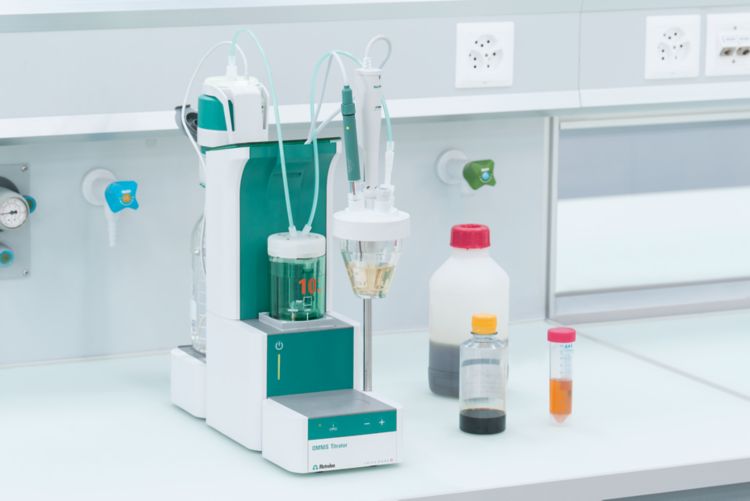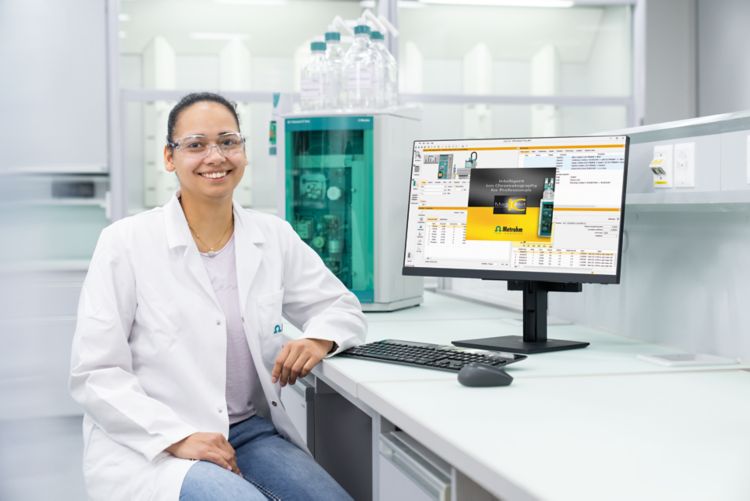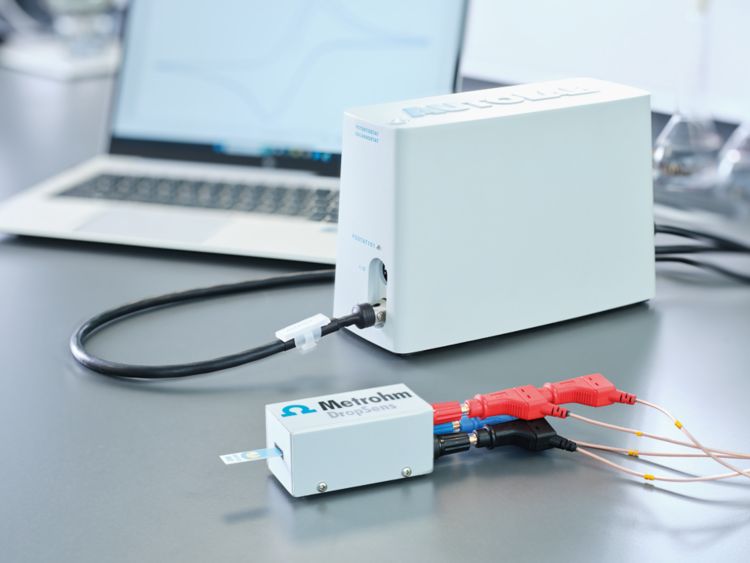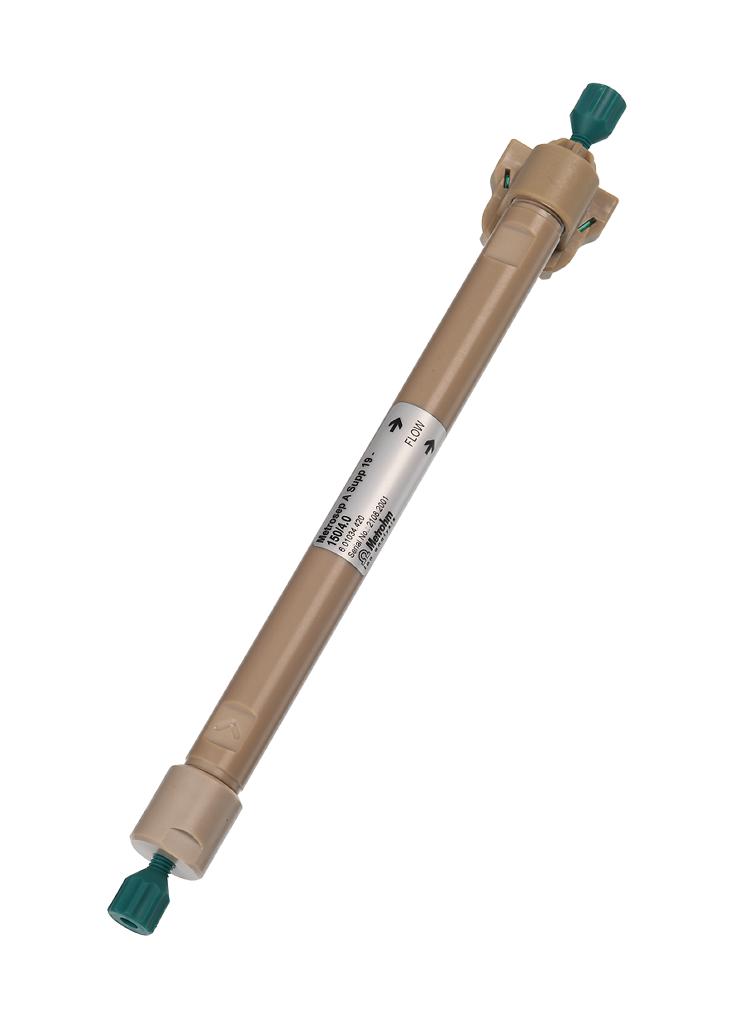Søg
- AB-132Polarographic determination of molybdenum in strongly ferruginous materials
A method is described in this Bulletin that allows molybdenum to be determined in steel and other materials containing a high iron concentration. Mo(VI) is determined at the dropping mercury electrode by catalytic polarography. The determination limit is approx. 10 μg/L Mo(VI).
- AB-133Determination of ammonia with the ion-selective electrode – Tips and tricks for a reliable determination according to common standards
Although the known photometric methods for the determination of ammonia/ammonium are accurate, they require a considerable amount of time (Nessler method 30 min, indophenol method 90 min reaction time). A further disadvantage of these methods is that only clear solutions can be measured. Opaque solutions must first be clarified by time-consuming procedures. These problems do not exist with the ion-selective ammonia electrode. Measurements can be easily performed in waste water, liquid fertilizer, and urine as well as in soil extracts. Especially for fresh water and waste water samples several standards, such as ISO 6778, EPA 350.2, EPA 305.3 and ASTM D1426, describe the analysis of ammonium by ion measurement. In this Application Bulletin, the determination according to these standards is described besides the determination of other samples as well as some general tips and tricks on how to handle the ammonia ion selective electrode. Determination of ammonia in ammonium salts, of the nitric acid content in nitrates, and of the nitrogen content of organic compounds with the ion-selective ammonia electrode is based on the principle that the ammonium ion is released as ammonia gas upon addition of excess caustic soda:NH4+ + OH- = NH3 + H2OThe outer membrane of the electrode allows the ammonia to diffuse through. The change in the pH value of the inner electrolyte solution is monitored by a combined glass electrode. If the substance to be measured is not present in the form of an ammonium salt, it must first be converted into one. Organic nitrogen compounds, especially amino compounds are digested according to Kjeldahl by heating with concentrated sulfuric acid. The carbon is oxidized to carbon dioxide in the process while the organic nitrogen is transformed quantitatively into ammonium sulfate.
- AB-134Determination of potassium with an ion-selective electrode
Potassium is one of the most common elements and can be found in many different minerals and other potassium compounds. It is of importance for humans, animals and plants as it is an essential mineral nutrient and involved in many cellular functions like cell metabolism and cell growth. For these reasons, it is important to be able to declare the potassium content of food or soil to reduce problems that may arise by a potassium deficiency or extensive consumption.This bulletin describes an alternative to flame photometric method using an ion selective electrode and direct measurement or standard addition technique. Several potassium determinations in different matrices using the combined potassium ion-selective electrode (ISE) are presented here. Additionally, general hints, tips and tricks for best measurement practice are given.
- AB-135Potentiometric determination of hydrogen sulfide, carbonyl sulfide, and mercaptans in petroleum products
This Bulletin describes the potentiometric determination of hydrogen sulfide, carbonyl sulfide, and mercaptans in gaseous and liquid products of the oil industry (natural gas, liquefied petroleum gas, used absorption solutions, distillate fuels, aviation gasoline, gasoline, kerosene, etc.). The samples are titrated with alcoholic silver nitrate solution using the Ag Titrode.
- AB-136Polarographic determination of styrene in polystyrene and copolymers
This Application Bulletin describes a simple polarographic method to determine monomeric styrene in polymers. The limit of determination lies at 5 mg/L. Before the determination, styrene is converted to the electrochemically active pseudonitrosite using sodium nitrite.
- AB-137Coulometric water content determination according to Karl Fischer
This Application Bulletin gives an overview of the coulometric water content determination according to Karl Fischer.Amongst others, it describes the handling of electrodes, samples, and water standards. The described procedures and parameters comply with the ASTM E1064.
- AB-140Titrimetric sulfate determination
This Bulletin describes three potentiometric, one photometric, one thermometric and one conductometric titration method for sulfate determination. The question of which indication method is the most suitable depends primarily on the sample matrix.Method 1: Precipitation as barium sulfate and back titration of the Ba2+ surplus with EGTA. Use of the ion-selective calcium electrode as indicator electrode.Method 2: As with Method 1, although with the electrode combination tungsten/platinum.Method 3: Precipitation titration in semi-aqueous solution with lead nitrate in accordance with the European Pharmacopoeia using the ion-selective lead electrode as indicator electrode.Method 4: Photometric titration with lead nitrate, dithizone indicator and the Optrode 610 nm, particularly suitable for low concentrations (up to 5 mg SO42- in the sample solution).Method 5: Thermometric precipitation titration with Ba2+ in aqueous solution, particularly suitable for fertilizers.Method 6: Conductometric titration with barium acetate in accordance with DIN 53127
- AB-141Analysis of edible fats and oils – The seven most important parameters for quality control
As the determination of the exact content of individual glycerides in fats and oils is difficult and time-consuming, several fat sum parameters or fat indices are used for the characterization and quality control of fats and oils. Fats and oils are not only essential for cooking, they are also an important ingredient in pharmaceuticals and personal care products, such as ointments and creams. Consequently, several norms and standards describe the determination of the most important quality control parameters. This Application Bulletin describes eight important analytical methods for the following fat parameters in edible oils and fats:Determination of water content in accordance with the Karl Fischer method; Oxidation stability in accordance with the Rancimat method; Iodine value; Peroxide value; Saponification value; Acid value, free fatty acids (FFA); Hydroxyl number; Traces of nickel using polarography; Special care is taken to avoid chlorinated solvents in these methods. Also, as many of the mentioned methods as possible are automated.
- AB-142Karl Fischer water determination in gases
This Application Bulletin describes the determination of water in non-explosive and non-flammable gaseous samples using the coulometric Karl Fischer method. This method is ideal for very low water contents.
- AB-143Determination of complexing agents in detergents
Application Bulletin AB-076 contains a description of the polarographic determination of low concentrations (1–100 mg/L) of NTA and EDTA in bodies of water. NTA, EDTA and citrate have gained in importance as complexing agents and builders due to the fact that the laws of some countries have made it necessary to find a substitute for phosphates in detergents.This Bulletin describes the determination of larger quantities of complexing agents in detergents using potentiometric titration. The ion-selective copper electrode (Cu-ISE) is used here as the indicator electrode. The determination of complexing agents is not disturbed by the other constituents often present in detergents.




























































































